Bogota
Salt Cathedral
Monserrate
Gold Museum
Botero Museum
Santa Marta
Tayrona National Park
Taganga
Cartagena de Indias
Islas del Rosario
Castillo de San Felipe
Colombia, is a constitutional republic in northwestern South America. Colombia is bordered to the east by Venezuela and Brazil; to the south by Ecuador and Peru; to the north by the Caribbean Sea; to the northwest by Panama; and to the west by the Pacific Ocean. Colombia also shares maritime borders with Venezuela, Jamaica, Haiti, the Dominican Republic, Honduras, Nicaragua and Costa Rica. With a population of over 45 million people, Colombia has the 29th largest population in the world and the second largest in South America, after Brazil. Colombia has the third largest population of any Spanish-speaking country in the world, after Mexico and Spain.
The territory of what is now "Colombia" was originally inhabited by indig enous people including the Muisca, Quimbaya, and Tairona. The Spanish arrived in 1499 and initiated a period of conquest and colonization creating the Viceroyalty of New Granada (comprising modern-day Colombia, Venezuela, Ecuador, the northwest region of Brazil and Panama) with its capital in Bogotá. Independence from Spain was won in 1819, but by 1830 "Gran Colombia" had collapsed with the secession of Venezuela and Ecuador. What is now Colombia and Panama emerged as the Republic of New Granada. The new nation experimented with federalism as the Granadine Confederation (1858), and then the United States of Colombia (1863), before the Republic of Colombia was finally declared in 1886. Panama seceded in 1903 under pressure to fulfill financial responsibilities towards the United States government to build the Panama Canal.
enous people including the Muisca, Quimbaya, and Tairona. The Spanish arrived in 1499 and initiated a period of conquest and colonization creating the Viceroyalty of New Granada (comprising modern-day Colombia, Venezuela, Ecuador, the northwest region of Brazil and Panama) with its capital in Bogotá. Independence from Spain was won in 1819, but by 1830 "Gran Colombia" had collapsed with the secession of Venezuela and Ecuador. What is now Colombia and Panama emerged as the Republic of New Granada. The new nation experimented with federalism as the Granadine Confederation (1858), and then the United States of Colombia (1863), before the Republic of Colombia was finally declared in 1886. Panama seceded in 1903 under pressure to fulfill financial responsibilities towards the United States government to build the Panama Canal.
Colombia has a long tradition of constitutional government. The Liberal and Conservative parties, founded in 1848 and 1849 respectively, are two of the oldest surviving political parties in the Americas. However, tensions between the two have frequently erupted into violence, most notably in the Thousand Days War (1899–1902) and La Violencia, beginning in 1948. Since the 1960s, government forces, left-wing insurgents and right-wing paramilitaries have been engaged in the continent's longest-running armed conflict. Fuelled by the cocaine trade, this escalated dramatically in the 1980s. Nevertheless, in the recent decade (2000s) the violence has decreased significantly. Many paramilitary groups have demobilized as part of a controversial peace process with the government, and the guerrillas have lost control in many areas where they on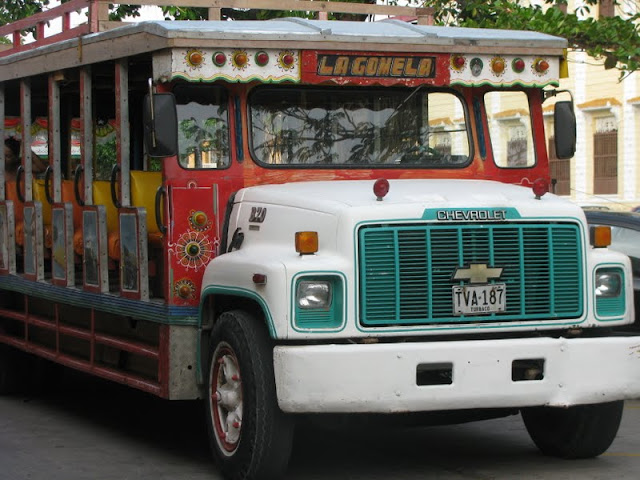 ce dominated. Meanwhile Colombia's homicide rate, for many years one of the highest in the world, almost halved between 2002 and 2006. 2009 and 2010 saw an increase in the urban homicide rate, particularly in the city of Medellín, attributed to gang warfare and paramilitary successor groups. According to the Maplecroft research institute, in 2010 Colombia had the world's sixth highest risk of terrorism.
ce dominated. Meanwhile Colombia's homicide rate, for many years one of the highest in the world, almost halved between 2002 and 2006. 2009 and 2010 saw an increase in the urban homicide rate, particularly in the city of Medellín, attributed to gang warfare and paramilitary successor groups. According to the Maplecroft research institute, in 2010 Colombia had the world's sixth highest risk of terrorism.
Colombia is a standing middle power with the fourth largest economy in Latin America. Inequality and unequal distribution of wealth are widespread. In 1990, the ratio of income between the poorest and richest 10 per cent was 40-to-one. Following a decade of economic restructuring and a recession, this ratio had climbed to 80-to-one in the year 2000. By 2009, Colombia had reached a Gini coefficient of 0.587, which was the highest in Latin America. According to the Office of the United Nations High Commissioner for Human Rights, "there has been a decrease in the poverty rate in recent years, around half of the population continues to live under the poverty line" as of 2008-2009. Official figures for 2009 indicate that about 46% of Colombians lived below the poverty line and some 17% in "extreme poverty".
Colombia is very ethnically diverse, and the interaction between descendants of the original native inhabitants, Spanish colonists, Africans brought as slaves and twentieth-century immigrants from Europe and the Middle East has produced a rich cultural heritage. This has also been influenced by Colombia's varied geography. The majority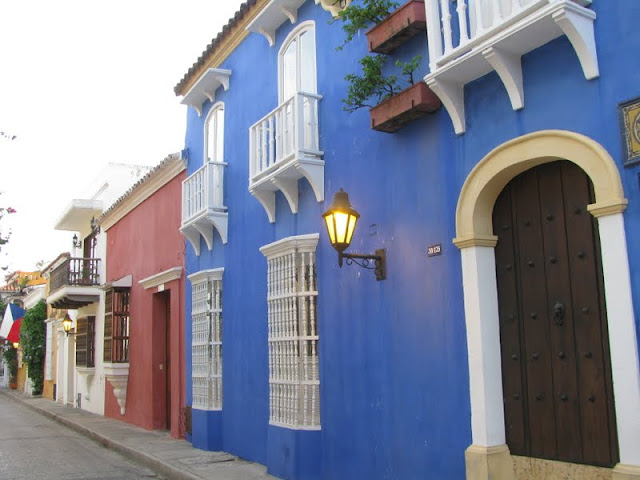 of the urban centres are located in the highlands of the Andes mountains, but Colombian territory also encompasses Amazon rainforest, tropical grassland and both Caribbean and Pacific coastlines. Ecologically, Colombia is one of the world's 17 megadiverse countries.
of the urban centres are located in the highlands of the Andes mountains, but Colombian territory also encompasses Amazon rainforest, tropical grassland and both Caribbean and Pacific coastlines. Ecologically, Colombia is one of the world's 17 megadiverse countries.
Approximately 10,000 BC, hunter-gatherer societies existed near present-day Bogotá (at "El Abra" and "Tequendama") which traded with one another and with cultures living in the Magdalena River Valley Beginning in the first millennium BC, groups of Amerindians developed the political system of "cacicazgos" with a pyramidal structure of power headed by caciques. Within Colombia, the two cultures with the most complex cacicazgo systems were the Tayronas in the Caribbean Region, and the Muiscas in the highlands around Bogotá, both of which were of the Chibcha language family. The Muisca people are considered to have had one of the most developed political systems in South America, after the Incas.
Spanish explorers made the first exploration of the Caribbean littoral in 1499 led by Rodrigo de Bastidas. Christopher Columbus navigated near the Caribbean in 1502. In 1508, Vasco Núñez de Balboa started the conquest of the territory through the region of Urabá. In 1513, he was the first European to discover the Pacific Ocean, which he called Mar del Sur (or "Sea of the South") and which in fact would bring the Spaniards to Peru and Chile.
Alonso de Lugo (who had sailed with Columbus) reached the Guajira Peninsula in 1500. Santa Marta was founded in 1525, and Cartagena in 1533. Gonzalo Jiminez de Quesada led an expedition to the interior in 1535, and founded the "New City of Granada", the name soon changed t o "Santa Fé de Bogotá." Two other notable journeys by Spaniards to the interior took place in the same period. Sebastian de Belalcazar, conqueror of Quito, traveled north and founded Cali in 1536 and Popayán in 1537; Nicolas Federman crossed Llanos Orientales and went over the Eastern Cordillera.
o "Santa Fé de Bogotá." Two other notable journeys by Spaniards to the interior took place in the same period. Sebastian de Belalcazar, conqueror of Quito, traveled north and founded Cali in 1536 and Popayán in 1537; Nicolas Federman crossed Llanos Orientales and went over the Eastern Cordillera.
The territory's main population was made up of hundreds of tribes of the Chibchan and Carib, currently known as the Caribbean people, whom the Spaniards conquered through warfare and alliances, while resulting disease such as smallpox, and the conquest and ethnic cleansing itself caused a demographic reduction among the indigenous people. In the 16th century, Europeans began to bring slaves from Africa.
Since the beginning of the periods of Conquest and Colonization, there were several rebel movements under Spanish rule, most of them either being crushed or remaining too weak to change the overall situation. The last one which sought outright independence from Spain sprang up around 1810, following the independence of St. Domingue in 1804 (present-day Haiti), who provided a non-negligible degree of support to the eventual leaders of this rebellion: Simón Bolívar and Francisco de Paula Santander.
A movement initiated by Antonio Nariño, who opposed Spanish centralism and led the opposition against the viceroyalty, led to the independence of Cartagena in November 1811. This led to the formation of two independent governments which fought a civil war, a period known as La Patria Boba. The following year Nariño proclaimed the United Provinces of New Granada, headed by Camilo Torres Tenorio. Despite the successes of the rebellion, the emergence of two distinct ideological currents among the liberators (federalism and centralism) gave rise to an internal clash between these two, thus contributing to the reconquest of territory by the Spanish, allowing restoration of the viceroyalty under the command of Juan de Samano, whose regime punished those who participated in the uprisings. This stoked renewed rebellion, which, combined with a weakened Spain, made possible a successful rebellion led by Simón Bolívar, who finally proclaimed independence in 1819. The pro-Spanish resistance was finally defeated in 1822 in the present territory of Colombia and in 1823 in Venezuela.
gave rise to an internal clash between these two, thus contributing to the reconquest of territory by the Spanish, allowing restoration of the viceroyalty under the command of Juan de Samano, whose regime punished those who participated in the uprisings. This stoked renewed rebellion, which, combined with a weakened Spain, made possible a successful rebellion led by Simón Bolívar, who finally proclaimed independence in 1819. The pro-Spanish resistance was finally defeated in 1822 in the present territory of Colombia and in 1823 in Venezuela.
The territory of the Viceroyalty of New Granada became the Republic of Colombia organized as a union of Ecuador, Colombia and Venezuela (Panama was then an integral part of Colombia). The Congress of Cucuta in 1821 adopted a constitution for the new Republic. The first President of Colombia was the Venezuelan-born Simón Bolívar, and Francisco de Paula Santander was Vice President. However, the new republic was very unstable and ended with the rupture of Venezuela in 1829, followed by Ecuador in 1830.
Internal political and territorial divisions led to the secession of Venezuela and Quito (today's Ecuador) in 1830. The so-called "Department of Cundinamarca" adopted the name "Nueva Granada", which it kept until 1856 when it became the "Confederación Granadina" (Grenadine Confederation). After a two-year civil war in 1863, the "United States of Colombia" was created, lasting until 1886, when the country finally became known as the Republic of Colombia. Internal divisions remained between the bipartisan political forces, occasionally igniting very bloody civil wars, the most significant being the Thousand Days civil war (1899–1902).
This, together with the United States of America's intentions to influence the area (especially the Panama Canal construction and control) led to the separation of the Department of Panama in 1903 and the establishment of it as a nation. The United States paid Colombia $25,000,000 in 1921, seven years after completion of the canal, for redress of President Roosevelt's role in the cr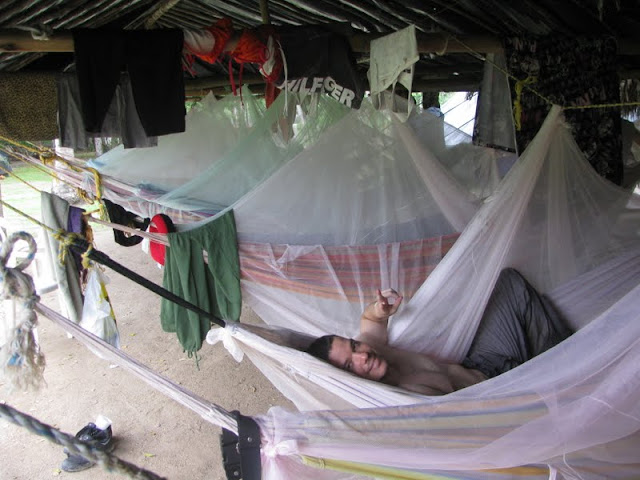 eation of Panama, and Colombia recognized Panama under the terms of the Thomson-Urrutia Treaty. Colombia was engulfed in the Year-Long War with Peru over a territorial dispute involving the Amazonas Department and its capital Leticia.
eation of Panama, and Colombia recognized Panama under the terms of the Thomson-Urrutia Treaty. Colombia was engulfed in the Year-Long War with Peru over a territorial dispute involving the Amazonas Department and its capital Leticia.
Soon after, Colombia achieved a relative degree of political stability, which was interrupted by a bloody conflict that took place between the late 1940s and the early 1950s, a period known as La Violencia ("The Violence"). Its cause was mainly mounting tensions between the two leading political parties, which subsequently ignited after the assassination of the Liberal presidential candidate Jorge Eliécer Gaitán on April 9, 1948. This assassination caused riots in Bogotá and became known as El Bogotazo. The violence from these riots spread throughout the country and claimed the lives of at least 180,000 Colombians.
From 1953 to 1964 the violence between the two political parties decreased first when Gustavo Rojas deposed the President of Colombia in a coup d'état and negotiated with the guerrillas, and then under the military junta of General Gabriel París Gordillo.
After Rojas' deposition the two political parties Colombian Conservative Party and Colombian Liberal Party agreed to the creation of a "National Front", whereby the Liberal and Conservative parties would govern jointly. The presidency would be determined by an alternating conservative and liberal president every 4 years for 16 years; the two parties would have parity in all other elective offices. The National Front ended "La Violencia", and National Front admin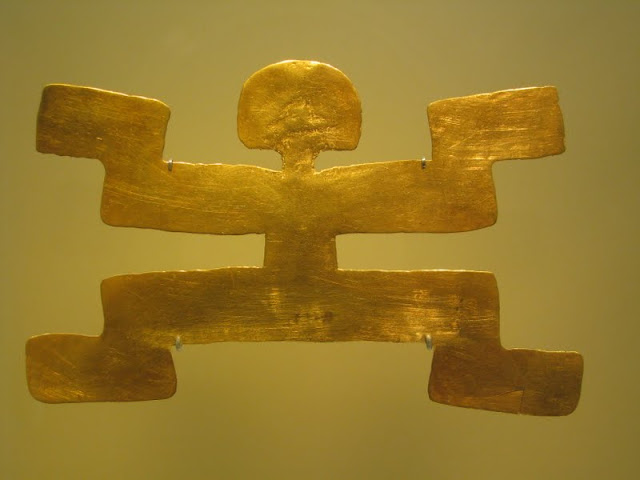 istrations attempted to institute far-reaching social and economic reforms in cooperation with the Alliance for Progress. In the end, the contradictions between each successive Liberal and Conservative administration made the results decidedly mixed. Despite the progress in certain sectors, many social and political problems continued, and guerrilla groups were formally created such as the FARC, ELN and M-19 to fight the government and political apparatus. These guerrilla groups were dominated by Marxist doctrines.
istrations attempted to institute far-reaching social and economic reforms in cooperation with the Alliance for Progress. In the end, the contradictions between each successive Liberal and Conservative administration made the results decidedly mixed. Despite the progress in certain sectors, many social and political problems continued, and guerrilla groups were formally created such as the FARC, ELN and M-19 to fight the government and political apparatus. These guerrilla groups were dominated by Marxist doctrines.
Emerging in the late 1970s, powerful and violent drug cartels further developed during the 1980s and 1990s. The Medellín Cartel under Pablo Escobar and the Cali Cartel, in particular, exerted political, economic and social influence in Colombia during this period. These cartels also financed and influenced different illegal armed groups throughout the political spectrum. Some enemies of these allied with the guerrillas and created or influenced paramilitary groups.
The new Colombian Constitution of 1991 was ratified after being drafted by the Constituent Assembly of Colombia. The constitution included key provisions on political, ethnic, human and gender rights. The new constitution initially prohibited the extradition of Colombian nationals, caus ing accusations that drug cartels had lobbied for the provision; extradition was allowed again in 1996 when the provision was repealed. The cartels had previously promoted a violent campaign against extradition, leading to many terrorist attacks and mafia-style executions. They also tried to influence the government and political structure of Colombia through corruption, as in the case of the 8000 Process scandal.
ing accusations that drug cartels had lobbied for the provision; extradition was allowed again in 1996 when the provision was repealed. The cartels had previously promoted a violent campaign against extradition, leading to many terrorist attacks and mafia-style executions. They also tried to influence the government and political structure of Colombia through corruption, as in the case of the 8000 Process scandal.
In recent years, the country has continued to be plagued by the effects of the drug trade, guerrilla insurgencies like FARC, and paramilitary groups such as the AUC, which along with other minor factions have engaged in a bloody internal armed conflict. President Andrés Pastrana and the FARC attempted to negotiate a solution to the conflict between 1999 and 2002. The government set up a "demilitarized" zone, but repeated tensions and crisis led the Pastrana administration to conclude that the negotiations were ineffectual. Pastrana also began to implement the Plan Colombia initiative, with the dual goal of ending the armed conflict and promoting a strong anti-narcotic strategy.
During the presidency of Álvaro Uribe, the government applied more military pressure on the FARC and other outlawed groups. After the offensive, which was supported by foreign aid provided by the United States, many security indicators improved. Reported kidnappings showed a steep decrease (from 3,700 in the year 2000 to 172 in 2009 (Jan.-Oct.)) and so did intentional homicides (from 28,837 in 2002 to 15,817 in 2009, according to police, while the health system re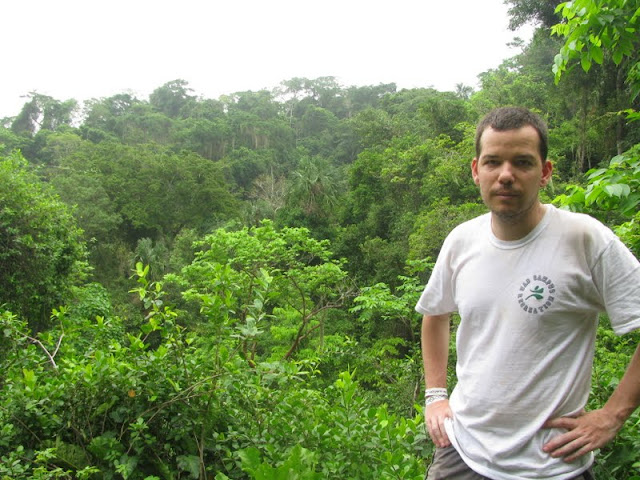 ported a decline from 28,534 to 17,717 during the same period). Kidnappings suffered a steady decline for almost a decade until a 2010 increase saw 280 cases reported between January and October, most of which were concentrated in the Medellín area. According to official statistics, guerrillas were reduced from 24,000 fighters in 2002 to 9,500 in 2010. While rural areas and jungles remained dangerous, the overall reduction of violence led to the growth of internal travel and tourism after security conditions improved.
ported a decline from 28,534 to 17,717 during the same period). Kidnappings suffered a steady decline for almost a decade until a 2010 increase saw 280 cases reported between January and October, most of which were concentrated in the Medellín area. According to official statistics, guerrillas were reduced from 24,000 fighters in 2002 to 9,500 in 2010. While rural areas and jungles remained dangerous, the overall reduction of violence led to the growth of internal travel and tourism after security conditions improved.
The 2006–2007 Colombian parapolitics scandal emerged from the revelations and judicial implications of past and present links between paramilitary groups, mainly the AUC, and some government officials and many politicians, most of them allied to the governing administration.
Salt Cathedral
Monserrate
Gold Museum
Botero Museum
Santa Marta
Tayrona National Park
Taganga
Cartagena de Indias
Islas del Rosario
Castillo de San Felipe
Colombia, is a constitutional republic in northwestern South America. Colombia is bordered to the east by Venezuela and Brazil; to the south by Ecuador and Peru; to the north by the Caribbean Sea; to the northwest by Panama; and to the west by the Pacific Ocean. Colombia also shares maritime borders with Venezuela, Jamaica, Haiti, the Dominican Republic, Honduras, Nicaragua and Costa Rica. With a population of over 45 million people, Colombia has the 29th largest population in the world and the second largest in South America, after Brazil. Colombia has the third largest population of any Spanish-speaking country in the world, after Mexico and Spain.
The territory of what is now "Colombia" was originally inhabited by indig
Colombia has a long tradition of constitutional government. The Liberal and Conservative parties, founded in 1848 and 1849 respectively, are two of the oldest surviving political parties in the Americas. However, tensions between the two have frequently erupted into violence, most notably in the Thousand Days War (1899–1902) and La Violencia, beginning in 1948. Since the 1960s, government forces, left-wing insurgents and right-wing paramilitaries have been engaged in the continent's longest-running armed conflict. Fuelled by the cocaine trade, this escalated dramatically in the 1980s. Nevertheless, in the recent decade (2000s) the violence has decreased significantly. Many paramilitary groups have demobilized as part of a controversial peace process with the government, and the guerrillas have lost control in many areas where they on
Colombia is a standing middle power with the fourth largest economy in Latin America. Inequality and unequal distribution of wealth are widespread. In 1990, the ratio of income between the poorest and richest 10 per cent was 40-to-one. Following a decade of economic restructuring and a recession, this ratio had climbed to 80-to-one in the year 2000. By 2009, Colombia had reached a Gini coefficient of 0.587, which was the highest in Latin America. According to the Office of the United Nations High Commissioner for Human Rights, "there has been a decrease in the poverty rate in recent years, around half of the population continues to live under the poverty line" as of 2008-2009. Official figures for 2009 indicate that about 46% of Colombians lived below the poverty line and some 17% in "extreme poverty".
Colombia is very ethnically diverse, and the interaction between descendants of the original native inhabitants, Spanish colonists, Africans brought as slaves and twentieth-century immigrants from Europe and the Middle East has produced a rich cultural heritage. This has also been influenced by Colombia's varied geography. The majority
Approximately 10,000 BC, hunter-gatherer societies existed near present-day Bogotá (at "El Abra" and "Tequendama") which traded with one another and with cultures living in the Magdalena River Valley Beginning in the first millennium BC, groups of Amerindians developed the political system of "cacicazgos" with a pyramidal structure of power headed by caciques. Within Colombia, the two cultures with the most complex cacicazgo systems were the Tayronas in the Caribbean Region, and the Muiscas in the highlands around Bogotá, both of which were of the Chibcha language family. The Muisca people are considered to have had one of the most developed political systems in South America, after the Incas.
Spanish explorers made the first exploration of the Caribbean littoral in 1499 led by Rodrigo de Bastidas. Christopher Columbus navigated near the Caribbean in 1502. In 1508, Vasco Núñez de Balboa started the conquest of the territory through the region of Urabá. In 1513, he was the first European to discover the Pacific Ocean, which he called Mar del Sur (or "Sea of the South") and which in fact would bring the Spaniards to Peru and Chile.
Alonso de Lugo (who had sailed with Columbus) reached the Guajira Peninsula in 1500. Santa Marta was founded in 1525, and Cartagena in 1533. Gonzalo Jiminez de Quesada led an expedition to the interior in 1535, and founded the "New City of Granada", the name soon changed t
The territory's main population was made up of hundreds of tribes of the Chibchan and Carib, currently known as the Caribbean people, whom the Spaniards conquered through warfare and alliances, while resulting disease such as smallpox, and the conquest and ethnic cleansing itself caused a demographic reduction among the indigenous people. In the 16th century, Europeans began to bring slaves from Africa.
Since the beginning of the periods of Conquest and Colonization, there were several rebel movements under Spanish rule, most of them either being crushed or remaining too weak to change the overall situation. The last one which sought outright independence from Spain sprang up around 1810, following the independence of St. Domingue in 1804 (present-day Haiti), who provided a non-negligible degree of support to the eventual leaders of this rebellion: Simón Bolívar and Francisco de Paula Santander.
A movement initiated by Antonio Nariño, who opposed Spanish centralism and led the opposition against the viceroyalty, led to the independence of Cartagena in November 1811. This led to the formation of two independent governments which fought a civil war, a period known as La Patria Boba. The following year Nariño proclaimed the United Provinces of New Granada, headed by Camilo Torres Tenorio. Despite the successes of the rebellion, the emergence of two distinct ideological currents among the liberators (federalism and centralism)
The territory of the Viceroyalty of New Granada became the Republic of Colombia organized as a union of Ecuador, Colombia and Venezuela (Panama was then an integral part of Colombia). The Congress of Cucuta in 1821 adopted a constitution for the new Republic. The first President of Colombia was the Venezuelan-born Simón Bolívar, and Francisco de Paula Santander was Vice President. However, the new republic was very unstable and ended with the rupture of Venezuela in 1829, followed by Ecuador in 1830.
Internal political and territorial divisions led to the secession of Venezuela and Quito (today's Ecuador) in 1830. The so-called "Department of Cundinamarca" adopted the name "Nueva Granada", which it kept until 1856 when it became the "Confederación Granadina" (Grenadine Confederation). After a two-year civil war in 1863, the "United States of Colombia" was created, lasting until 1886, when the country finally became known as the Republic of Colombia. Internal divisions remained between the bipartisan political forces, occasionally igniting very bloody civil wars, the most significant being the Thousand Days civil war (1899–1902).
This, together with the United States of America's intentions to influence the area (especially the Panama Canal construction and control) led to the separation of the Department of Panama in 1903 and the establishment of it as a nation. The United States paid Colombia $25,000,000 in 1921, seven years after completion of the canal, for redress of President Roosevelt's role in the cr
Soon after, Colombia achieved a relative degree of political stability, which was interrupted by a bloody conflict that took place between the late 1940s and the early 1950s, a period known as La Violencia ("The Violence"). Its cause was mainly mounting tensions between the two leading political parties, which subsequently ignited after the assassination of the Liberal presidential candidate Jorge Eliécer Gaitán on April 9, 1948. This assassination caused riots in Bogotá and became known as El Bogotazo. The violence from these riots spread throughout the country and claimed the lives of at least 180,000 Colombians.
From 1953 to 1964 the violence between the two political parties decreased first when Gustavo Rojas deposed the President of Colombia in a coup d'état and negotiated with the guerrillas, and then under the military junta of General Gabriel París Gordillo.
After Rojas' deposition the two political parties Colombian Conservative Party and Colombian Liberal Party agreed to the creation of a "National Front", whereby the Liberal and Conservative parties would govern jointly. The presidency would be determined by an alternating conservative and liberal president every 4 years for 16 years; the two parties would have parity in all other elective offices. The National Front ended "La Violencia", and National Front admin
Emerging in the late 1970s, powerful and violent drug cartels further developed during the 1980s and 1990s. The Medellín Cartel under Pablo Escobar and the Cali Cartel, in particular, exerted political, economic and social influence in Colombia during this period. These cartels also financed and influenced different illegal armed groups throughout the political spectrum. Some enemies of these allied with the guerrillas and created or influenced paramilitary groups.
The new Colombian Constitution of 1991 was ratified after being drafted by the Constituent Assembly of Colombia. The constitution included key provisions on political, ethnic, human and gender rights. The new constitution initially prohibited the extradition of Colombian nationals, caus
In recent years, the country has continued to be plagued by the effects of the drug trade, guerrilla insurgencies like FARC, and paramilitary groups such as the AUC, which along with other minor factions have engaged in a bloody internal armed conflict. President Andrés Pastrana and the FARC attempted to negotiate a solution to the conflict between 1999 and 2002. The government set up a "demilitarized" zone, but repeated tensions and crisis led the Pastrana administration to conclude that the negotiations were ineffectual. Pastrana also began to implement the Plan Colombia initiative, with the dual goal of ending the armed conflict and promoting a strong anti-narcotic strategy.
During the presidency of Álvaro Uribe, the government applied more military pressure on the FARC and other outlawed groups. After the offensive, which was supported by foreign aid provided by the United States, many security indicators improved. Reported kidnappings showed a steep decrease (from 3,700 in the year 2000 to 172 in 2009 (Jan.-Oct.)) and so did intentional homicides (from 28,837 in 2002 to 15,817 in 2009, according to police, while the health system re
The 2006–2007 Colombian parapolitics scandal emerged from the revelations and judicial implications of past and present links between paramilitary groups, mainly the AUC, and some government officials and many politicians, most of them allied to the governing administration.
You have read this article with the title COLOMBIA. You can bookmark this page URL http://oinsweden.blogspot.com/2011/05/colombia.html. Thanks!
Write by:
AN - Tuesday, May 17, 2011







.jpg)


Comments "COLOMBIA"
Post a Comment